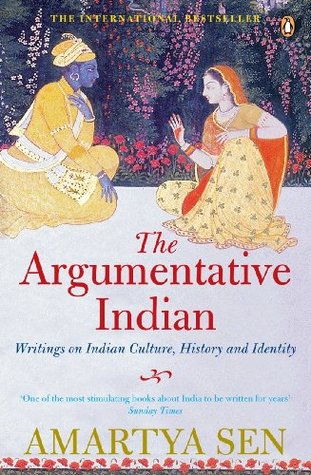More on this book
Community
Kindle Notes & Highlights
by
Amartya Sen
Read between
June 28 - October 26, 2018
For example, in his famous book, The Clash of Civilizations and the Remaking of World Order,11 Samuel Huntington places India firmly in the category of ‘the Hindu civilization’.
For example, in early seventh-century Japan, the influential Buddhist Prince Shotoku, who was regent to his mother, Empress Suiko, introduced a relatively liberal constitution or kempo (known as ‘the constitution of seventeen articles’) in 604 CE, which included the insistence (in the spirit of the Magna Carta to be signed six centuries later, in 1215): ‘Decisions on important matters should not be made by one person alone. They should be discussed with many.’ Shotoku also argued: ‘Nor let us be resentful when others differ from us. For all men have hearts, and each heart has its own leanings.
...more
Another major Buddhist achievement – not unrelated in fact to the interest in public communication – is that nearly every attempt at early printing in the world, in particular in China, Korea and Japan, was undertaken by Buddhist technologists, with an interest in expanding public communication.* The first ever printed book (or, more exactly, the first printed book that is actually dated) was the Chinese translation of an Indian Sanskrit treatise (Vajracchedikaprajñāpāramitā), the so-called ‘Diamond Sutra’. This was translated into Chinese by Kumārajīva (a half-Indian, half-Turkish Buddhist
...more
Also Ashoka, the Buddhist emperor, was a pioneer in creating hospitals for public use in the third century BCE. There is also a statement in one of the Edicts that Ashoka had established hospitals in the Hellenistic kingdoms – a claim that may sound implausible but has been plausibly defended on the basis of available evidence by Thomas McEvilley.24
Despite its quintessential ‘Indianness’, there is a general understanding that, in an early form, Sanskrit came to India from abroad in the second millennium BCE, with the migration of Indo-Europeans, and then it developed further and flourished magnificently in India. It is also interesting to note that the greatest grammarian in Sanskrit (indeed possibly in any language), namely Pāṇini, who systematized and transformed Sanskrit grammar and phonetics around the fourth century BCE, was of Afghan origin (he describes his village on the banks of the river Kabul). These foreign connections have
...more
Indeed, interactions have enriched as well as spread Sanskrit beyond India’s borders over many centuries.* The seventh-century Chinese scholar Yi Jing learned his Sanskrit in Java (in the city of Shri Vijaya) on his way from China to India. The influence of interactions is well reflected in languages and vocabularies throughout Asia from Thailand and Malaya to Indo-China, Indonesia, the Philippines, Korea and Japan. And this applies to China too, where scholarship in Sanskrit flourished greatly in the first millennium, aside from the influences that came via other countries in the region. It
...more
He said that one must go through nationalism to reach internationalism, in the same way that one must go through war to reach peace.
The Chinese travellers Faxian (Fa-Hsien) and Xuanzang (Hiuan-tsang), who spent many years in India in the fifth and seventh centuries CE respectively, provided extensive accounts of what they saw. While they had gone to India for Buddhist studies, their reports cover a variety of Indian subjects, described with much care and interest.
Brahmagupta’s book was translated into Arabic in the eighth century and retranslated by Alberuni in the eleventh.
It had also, by this time, declined in the country of its origin (the last Buddhist dynasty in India, the Pālas of Bengal, petered out in the twelfth century).7 There was a similar – though somewhat smaller – flow in the opposite direction, from China to India.
Han Yu, an anti-Buddhist intellectual in the ninth century, who would be much championed later on by Confucians, put the issue starkly in his ‘Memorial on Buddhism’ written in 819: The Buddha was of barbarian origin. His language differed from Chinese speech; his clothes were of a different cut; his mouth did not pronounce the prescribed words of the Former Kings; his body was not clad in garments prescribed by the Former Kings. He did not recognize the relationship between prince and subject, nor the sentiments of father and son.
As was mentioned in Essay 4, the first printed book in the world with a date (corresponding to 868 CE), which was the Chinese translation of a Sanskrit treatise, the so-called ‘Diamond Sutra’ (Kumārajīva had translated it in 402 CE), carried the remarkable motivational explanation: ‘for universal free distribution’.
On the early relations between India, Greece and Rome, see the lucidly illuminating essay by John Mitchener, ‘India, Greece and Rome: East-West Contacts in Classical Times’ (mimeographed, 2003), and also the large literature cited there.


